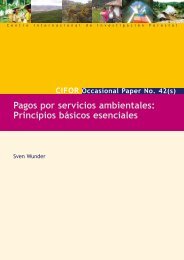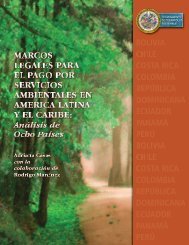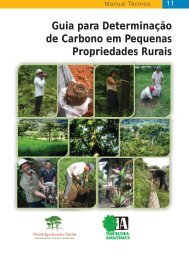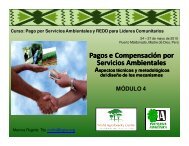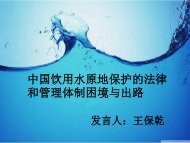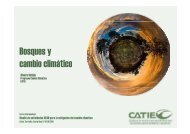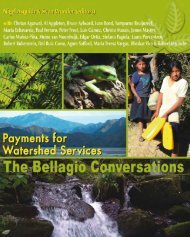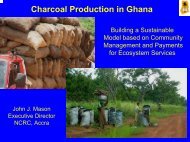Guide on Climate Change and Indigenous Peoples
Guide on Climate Change and Indigenous Peoples
Guide on Climate Change and Indigenous Peoples
- No tags were found...
You also want an ePaper? Increase the reach of your titles
YUMPU automatically turns print PDFs into web optimized ePapers that Google loves.
Central <strong>and</strong> Eastern Europe, RussianFederati<strong>on</strong>, Central Asia <strong>and</strong> Transcaucasia• <strong>Indigenous</strong> peoples are actively trying to partner with the academiccommunity so that local groups can participate in field research projects,<strong>and</strong> their results be communicated to <strong>and</strong> am<strong>on</strong>g local communities.• They undertake educati<strong>on</strong> programs to improve public awareness ofthe issues that will go towards assisting the development of their ownattitudes <strong>and</strong> ethical norms around adaptati<strong>on</strong> measures.North America• <strong>Indigenous</strong> peoples of North America are very positive that newmaterials <strong>and</strong> new ways of doing things form a comm<strong>on</strong> theme in thehistories of many Native peoples. Some are now taking advantage ofclimactic changes to do things they have not d<strong>on</strong>e in the past. Theychange food storage techniques <strong>and</strong> hunting <strong>and</strong> fishing grounds.• Some groups change species of animals <strong>and</strong> fishes they hunt.• In order to sustain their families <strong>and</strong> their domestic animals, the Inuitsfeed their reindeer grasses other than lichens during winter time.• In extreme cases, people look for relocati<strong>on</strong> sites either for l<strong>on</strong>g term oras temporary measures.• For the future, they believe that adopting new technologies is likely tobe the <strong>on</strong>ly means for dealing with the disrupti<strong>on</strong>s to their traditi<strong>on</strong>alsubsistence ec<strong>on</strong>omies. 14Pacific• Traditi<strong>on</strong>al marine social instituti<strong>on</strong>s in the Ra’ui in Rarot<strong>on</strong>ga, CookIsl<strong>and</strong>s serve as an effective c<strong>on</strong>servati<strong>on</strong> management tool <strong>and</strong> isimproving coral reef health.• <strong>Indigenous</strong> peoples’ ecological knowledge <strong>and</strong> customary sea tenureis also integrated with marine <strong>and</strong> social science to c<strong>on</strong>serve thebumphead parrotfish in Roviana Lago<strong>on</strong>, Solom<strong>on</strong> Isl<strong>and</strong>s.• <strong>Change</strong>s in sea tenure, back to more traditi<strong>on</strong>al roles, have also occurredin Kiribati. 15• In a coastal village <strong>on</strong> Vanua Levu, Fiji, the vanua (which refers tothe c<strong>on</strong>necti<strong>on</strong> of people with the l<strong>and</strong> through their ancestors <strong>and</strong>guardian spirits) serves as a guiding principle for the management <strong>and</strong>sustainable use of the rainforest, mangrove forest, coral reefs, <strong>and</strong>village gardens.• In other parts of the Pacific, indigenous peoples have built seawalls,provided a water drainage system <strong>and</strong> water tanks <strong>and</strong> banned treeclearing.PART IV: Adapting to <strong>Climate</strong> <strong>Change</strong>: <strong>Indigenous</strong> <strong>Peoples</strong> Show the Way 43



